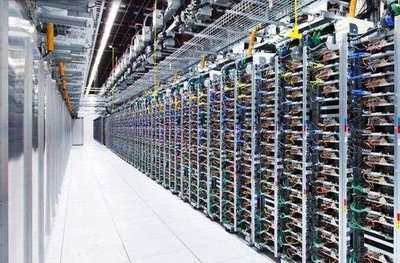In the rapidly evolving world of cryptocurrency, Bitcoin mining continues to serve as both a lucrative venture and a complex labyrinth of considerations. Understanding the intricacies of Bitcoin mining hardware ROI requires not only a sharp grasp of market dynamics but also an awareness of the often-overlooked aspect of price depreciation. As miners navigate this landscape, they must evaluate how the value of mining machines depreciates over time, thus impacting their overall return on investment.

At the heart of Bitcoin mining is the mining rig—the specialized hardware designed to solve complex mathematical problems and secure the network. This hardware is essential for the success of any mining operation, whether small-scale or part of a sprawling mining farm. However, mining rigs are not immune to the relentless march of technological advancement. Newer, more efficient models often emerge, causing older rigs to lose value quickly. This depreciation must be factored into any ROI calculation if miners are to make informed decisions about their investments.
Another critical element influencing the ROI of mining hardware is the volatile nature of cryptocurrency prices, notably Bitcoin’s ever-fluctuating valuation. When the price of Bitcoin rises, miners find their efforts significantly more rewarding. Conversely, when prices plummet, the economic viability of mining operations can take a substantial hit. This creates a delicate balance, where miners must remain acutely aware of market trends while also considering the speed at which their equipment depreciates.

Join the fray or watch from the sidelines—whether you’re hosting mining machines or owning a cryptocurrency exchange, understanding these elements can provide a distinct edge. For those investing in a mining farm, calculating the breakeven point becomes crucial. With various expenses like electricity and operational costs, assessing hardware depreciation alongside these expenses will inform miners when to retire out-of-date equipment to prevent ongoing losses.
Moreover, diversification in cryptocurrency mining can aid in mitigating risk. While Bitcoin remains the king of the crypto realm, alternative currencies such as Ethereum and Dogecoin provide viable options for those seeking to diversify their mining portfolio. Each coin comes with its own set of mining algorithms, equipment requirements, and market dynamics. When considering potential returns, ancillary currencies can sometimes outperform Bitcoin in specific market conditions, and this must be weighed against the efficiency and longevity of the mining rig.
As miners tally their expenses and potential rewards, understanding the market for second-hand cryptocurrency hardware also plays an integral role in calculating ROI. As newer models replace older ones, there exists a robust market for pre-owned equipment. Miners looking to optimize their investments can explore selling their deprecated mining rigs to offset some of the financial losses incurred through depreciation. Proper timing and market insight can yield significant returns even from outdated technology.

Furthermore, collaboration with established hosting services can alleviate some challenges surrounding hardware depreciation. Mining machine hosting allows users to lease space in a data center fully optimized for mining operations. This not only cuts down the costs associated with maintaining power and cooling systems but also allows miners to access cutting-edge technology without bearing the full burden of ownership. The resultant savings can significantly enhance overall ROI, allowing miners to focus on what matters most: maximizing yield.
Lastly, we mustn’t overlook the importance of community engagement within the cryptocurrency sector. Miners, traders, and enthusiasts frequently share insights, which can provide distinct perspectives on market conditions, mining strategies, and hardware upgrades. Forums, social media platforms, and local meetups foster a culture of sharing knowledge that can prove invaluable in navigating ROI calculations amidst the complex world of cryptocurrency mining.
By accounting for price depreciation, coupled with the fluctuating market of cryptocurrencies, miners wield the power to make informed and strategic decisions about their investments. While the path to success in Bitcoin mining may be strewn with challenges—depreciation being a primary concern—the potential for substantial returns remains firmly on the horizon. Through careful assessment of mining equipment costs, market trends, and the potential available in alternative cryptocurrencies, miners can ensure their ventures remain not only sustainable but profitable.
Mining ROI’s a gamble! This study factors in depreciation, a crucial, often-ignored cost. Suddenly, that shiny ASIC looks less profitable. Beware!